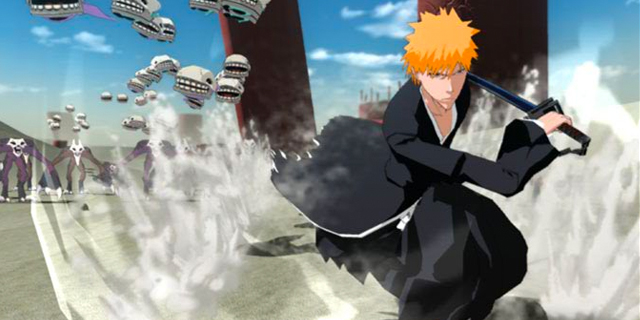
It must be difficult to create games based on existing properties. If you tell a story that happens alongside the main tale, you end up with a game that feels a bit hollow no matter how fun it is because at the end of the day it’s the main characters who save the world (Lord of the Rings: The Third Age). If you retell a story that your audience already knows, you get criticized for retreading old ground (Star Wars Episode III: Revenge of the Sith), and if you separate yourself from the main canon too much, your game had may as well be an IP all its own (Star Wars: Knights of the Old Republic).
Any of these types of games has the potential to be successful, but the most difficult path is retelling the story first told in another medium. That is exactly what Bleach: Soul Resurreccion does, so it’s safe to say that you need to be a fan of the source material to really enjoy what’s put forth here.
Soul Resurreccion comes with three gameplay modes and 21 playable characters. There’s a lot to work through here, so Bleach fans won’t be disappointed. Story mode takes place starting at episode 145 of the anime and retelling (mostly faithfully) through episode 390. This makes it difficult for newcomers to the series to jump in (even with the “previously on…” vignettes available) and potentially tiresome for longtime fans who already know what’s going on. Story mode features 14 levels, all of which require the use of a specific character to complete. This makes sense, as each level is centered on a different character. Completing story levels unlocks new playable characters and missions for Bleach’s second play mode, Mission. Mission mode plays similarly to story mode except the player is given free rein in character choice and a special, challenging goal, is required to clear the stage. Score Attack is the last mode, and it is exactly what it sounds like. Rack up as many points as possible with your favorite character in the time allotted to claw your way up the leaderboard.
Soul Resurreccion boasts plenty of variety with its 21 playable characters. Characters are more than just reskins, too. Some specialize in sword combat while others are hand-to-hand combatants, or distance fighters, and there are differences in how much HP a character has, how important timing is in pulling off combat moves, and whether special moves are used regularly or just to clear out an area. Where the falls short, though, is in providing enough things to do to make each character worth using and leveling up. It feels a lot like Dynasty Warriors in that regard. The time it takes to max a character out is not proportional to the amount of content in the game. Now multiply that by 21, because soul points (experience) are not transferrable from character to character.
Visually, Soul Resurreccion is a delight. Cel shading is used to great effect here, and playing the game looks like controlling an episode from the anime. There’s a lot of replay value here for fans of the series. Everybody else will view it as tedious grinding, but Bleach: Soul Resurreccion isn’t exactly pointed at newcomers and non-fans anyhow. If you can’t please everybody then please the fans you’ve already got, and if you like both Bleach and hack-and-slash games, then Soul Resurreccion won’t disappoint.
Pros: diverse character roster, visual style matches the source material
Cons: repetitive gameplay, long grind through the same stages to level all characters



















